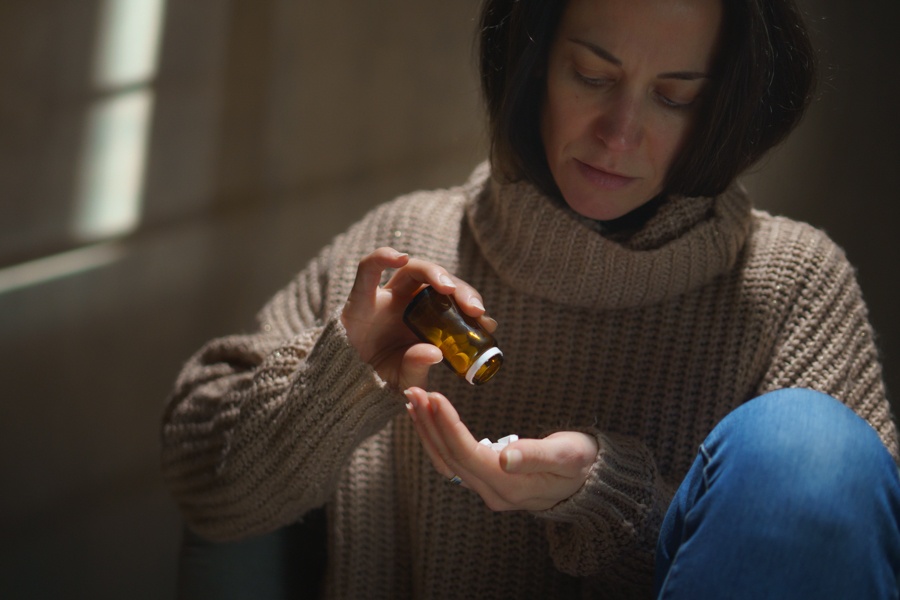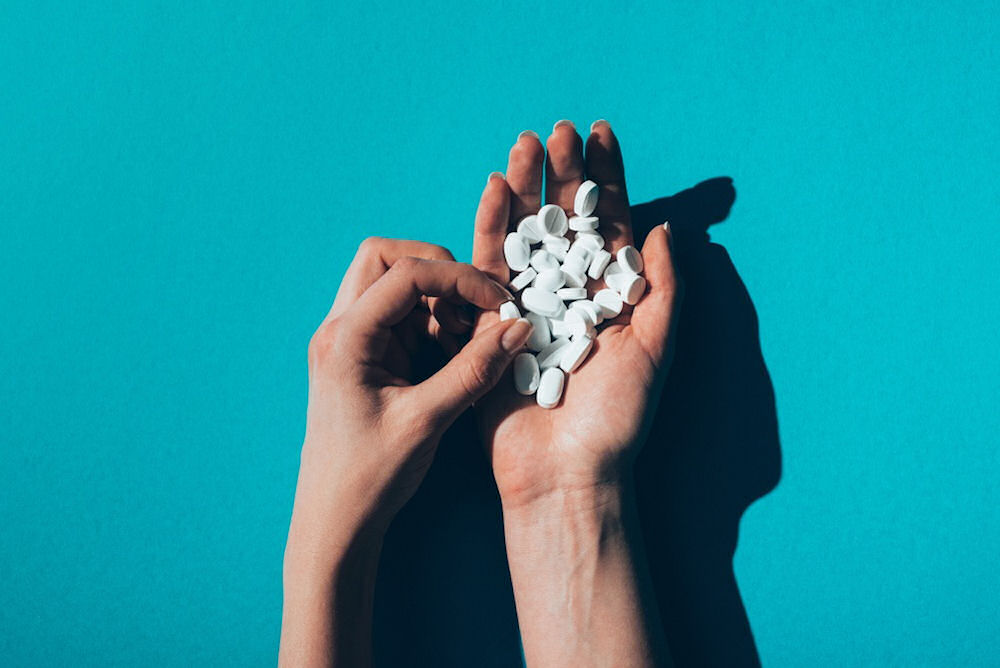Prescription Drug Detox in Los Angeles
Having an addiction to prescription drugs can be a debilitating and life-altering experience. It can often feel like you’re in an inescapable cycle of addiction, but there is hope. With the right kind of help and support, you can get your life back on track and free yourself from the grip of prescription drugs.
Your path to sobriety and eventual recovery can begin with a prescription drug detox program at a detox center in Pasadena, CA. But how can you tell which is best for you? Let’s learn more about prescription medications, the causes of addiction, and the role that prescription drug detox plays in the recovery process.
What are Prescription Drugs?
Prescription drugs refer to medications that are legally prescribed by a doctor or healthcare provider for medical treatment. It comes in many different types, but not all of them have the ability to develop into habits. Many prescription medications, though, when abused, can cause addiction. Prescription drugs can be divided into three categories: depressants, stimulants, and opioid narcotics.
Depressants
Depressants slow down the activity of the brain and nervous system. It can be effective for short-term treatment and is of great use for medical conditions such as anxiety, insomnia, or seizures. They are commonly used for their calming, sedative, or sleep-inducing effects.
- Benzodiazepines. The most commonly prescribed benzodiazepines include Diazepam (Valium), Alprazolam (Xanax), Clonazepam (Klonopin), Lorazepam (Ativan), and Temazepam (Restoril). Numerous conditions, such as anxiety, insomnia, seizure disorder, muscle spasms, and preoperative sedation are frequently treated with these drugs.
- Barbiturates. These depressants can be administered intravenously or orally. Barbiturates include Nembunal, Secobarbital (Seconal), and Amytal and are commonly used for insomnia, seizure, anxiety, headaches, and migraine pain, and as a preoperative sedative.
- Sleep Medications. These oral drugs are typically used to treat sleep-related conditions including insomnia or night terrors. Some of the frequently abused sleep medications include Eszopiclone (Lunesta), Zolpidem (Ambien), and Zaleplon (Sonata).
- Muscle Relaxants. This drug is typically prescribed for short-term relief of muscle pain and discomfort, often used alongside rest and physical therapy. The most common ones are Carisoprodol (Soma) and Cyclobenzaprine (Flexeril).
Stimulants
Stimulants enhance the effects of other chemicals in the brain to help improve concentration and focus. It is also great at producing feelings of wakefulness, alertness, and energy. Stimulants are commonly used to treat attention deficit hyperactivity disorder (ADHD), narcolepsy, and obesity.
- Amphetamines: This group includes both legal prescription medications like Adderall, Dexedrine, and Biphetamin, and illegal substances like methamphetamine. These drugs are used to treat conditions that affect focus, such as attention-deficit hyperactivity disorder (ADHD).
- Methylphenidate: Ritalin and Concerta, which are either ingested, snorted, or injected, are two examples of methylphenidate that are frequently abused. These medicines are both used to treat attention-deficit hyperactivity disorder (ADHD).
- Caffeine: Found in coffee, tea, and many energy drinks, caffeine is a widely consumed stimulant that promotes alertness and temporarily wards off drowsiness.
- Nicotine: A stimulant contained in cigarette products that makes you more alert and can become addictive.
- Cocaine: An illegal and highly addictive stimulant drug that increases energy and feelings of euphoria.
Opioid Narcotics
Opioid narcotics, also known as opioids, are a class of drugs that are commonly used for pain management. They work by binding to specific receptors in the brain, spinal cord, and other areas of the body, reducing the perception of pain and producing feelings of pleasure or euphoria.
- Codeine is a pain-relief medication typically prescribed for managing mild to moderate pain. Commonly found in cough syrups, codeine has a high potential for addiction.
- Fentanyl is a powerful synthetic opioid that is similar to but much more potent than morphine. It is typically used to manage severe pain, such as pain related to cancer or surgery.
- Hydrocodone is another frequently abused opioid, prescribed for treating moderate to severe pain when used appropriately.
- Morphine is primarily administered to treat intense pain in medical environments and has a high risk of addiction. Combining morphine with depressants like alcohol can be fatal due to its potential for abuse.
- Oxycontin is the brand name for oxycodone, an opioid used to manage moderate to severe pain. Oxycodone abuse rates are alarmingly high, and those misusing this drug often eventually turn to heroin use.
- Methadone is employed to alleviate moderate pain and is also utilized in treating heroin addiction symptoms. Long-term heroin users may use methadone, which doesn’t induce a “high” unless consumed in extremely large doses, to address physical discomfort and psychological cravings.
Understanding these different types of prescription drugs is essential if you’re considering entering a prescription drug detox program in Los Angeles—as is understanding why people become addicted to them in the first place.
How Is Prescription Drug Addiction Developed?
Prescription drug addiction is a serious issue, but one that’s, unfortunately, becoming more common. It can start innocently enough: maybe you take medication for pain relief or to treat a mental health issue. Over time, however, this use can become problematic and begin to interfere with everyday life.
It’s important to understand how prescription drug addiction develops and how quickly it can turn into an uncontrollable problem. It typically starts when using the drugs no longer serves its purpose—for example, taking painkillers beyond the prescribed timeframe to stay pain-free. This behavior may continue even when risks such as overdose are realized as a result of an increased tolerance.
Using higher doses than prescribed or taking more frequent doses in order to achieve the same effect is another typical way to develop prescription drug abuse and addiction. This can lead to physical and psychological dependence. Even if someone isn’t abusing the drug physically, they can still develop psychological symptoms that signify addiction—for example, constantly thinking about where and how to get their next fix.
Social and environmental factors, such as peer pressure, stress, or trauma, can also contribute to the development of prescription drug addiction.
Addiction is a complex disease that can be influenced by many other factors. If you or someone you know is struggling with prescription drug addiction, it’s important to seek help from a healthcare provider or addiction specialist right away.

Symptoms of Prescription Drug Abuse
Prescription drug abuse can manifest in both physical and behavioral symptoms. Since different types of prescription drugs can have different effects on our bodies, the symptoms of abuse can vary, but here are some of the more common signs to look out for:

Physical Symptoms
- Nausea or vomiting
- Confusion and dizziness
- Unusual sweating or heart palpitations
- Changes in sleeping patterns or mood swings
- Tremors, seizures, and other neurological issues
- Weight loss or gain
Behavioral Symptoms
- Unexplained financial problems, such as money missing from accounts
- Unusual secrecy or dramatic mood swings without explanation from the user
- Neglecting important responsibilities at home, work, or school
- Sudden changes in friends or activities
If you’ve noticed any of these warning signs in yourself or someone you love, it’s best to take action sooner rather than later. Finding the best prescription drug detox center in Los Angeles is the first step toward receiving effective treatment for prescription drug addiction.
Prescription Drug Withdrawal
Withdrawal from prescription medications can be uncomfortable, even dangerous. Therefore, before even thinking about attempting to quit taking prescription drugs, it’s necessary to be aware of the possible withdrawal symptoms.
Prescription medication withdrawal symptoms depend on the type of drug you’re addicted to. Depressant withdrawals may cause tremors, agitation, irritability, restlessness, and insomnia. Generally speaking, stimulant withdrawals cause increased agitation, irritability, impulsiveness, lethargy, and depressed moods. Opioid narcotic withdrawals can cause nausea, muscle aches, diarrhea, sweating, a rapid heart rate, and abdominal cramping.
Keep in mind that psychological symptoms may also manifest during prescription drug withdrawal—things like anxiety, depression, and suicidal thoughts or actions. It’s best to have professionals for medical detox or MAT, add some behavioral therapy so that any psychological effects can be managed as quickly as possible.
The Path to Recovery Center can help! Our detox facility is specifically made to support individuals as they comfortably and effectively withdraw from prescription medicines and start their journey to a better, happier life.
Get Help NowThe Benefits and Importance of Prescription Drug Detox in Recovery
Prescription drug detox is an important part of successful recovery from addiction. It’s the process of allowing your body to rid itself of the toxins from alcohol and drugs while also managing any physical and psychological withdrawal symptoms. This process helps to reduce cravings and, if done correctly in a safe, supervised environment, can put you on the path to long-term sobriety.
The following are some benefits associated with prescription medication detoxification:
- Reduced or eliminated drug cravings
- Improved physical health
- Improved mental health
- Reduced risk of relapse
- Reduced or eliminated withdrawal symptoms that can be experienced during detox
- Better management of emotions
- Increased ability to cope with stressors and triggers in a healthy way
- Restored motivation for recovery goals
- Reducing the overall cost of treatment
Choosing the Right Prescription Drug Detox Center
If you’ve decided to seek professional assistance for a prescription drug addiction in Los Angeles, then the next step is to choose an appropriate detox center. After all, a good detox center can be the difference between successful recovery and relapse.
License or Accreditation
One of the most important factors is making sure the facility is accredited or licensed. This means they follow certain standards and provide quality care that is regulated. You can also find out what type of detox protocols they’re using and whether they include addiction counseling and therapy.
Cost
Another factor that you have to consider is the cost of the detox program and whether it is covered by your insurance. If you don’t have insurance, look for programs that offer sliding scale fees or other forms of financial assistance. In general, your overall cost will increase the longer you stay in detox.
Location
Consider the location of the detox center and whether it is convenient for you or your loved one. It’s also important to consider whether a change of scenery, such as moving to a different state, may be beneficial for recovery.
Reviews and Recommendations
Look for online reviews or ask for recommendations from healthcare providers or other people in recovery to get an idea of the quality of care provided at a particular detox center.
Finding the right prescription drug detox center can be a crucial first step in conquering addiction and achieving long-lasting recovery. It’s important to take the time to research and carefully consider your options to ensure you find a program that is the right fit for your needs.
How Path to Recovery Center Can Help
Path to Recovery Center is a prescription drug detox center in Los Angeles that is dedicated to helping individuals recover from prescription medication abuse. We provide patients with the best program that ensures their safety, health, and success in overcoming their dependence on drugs.
Path to Recovery Center is equipped with medical professionals who can help individuals heal from addiction and create a custom treatment plan tailored for maximum benefit. Your life is a journey, and it’s never too late to reclaim your destiny. Take the first step and get the help you need to find sobriety. Contact us today!
Call us on 323-996-7773



